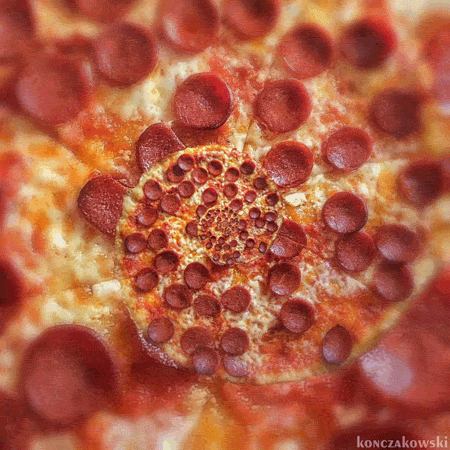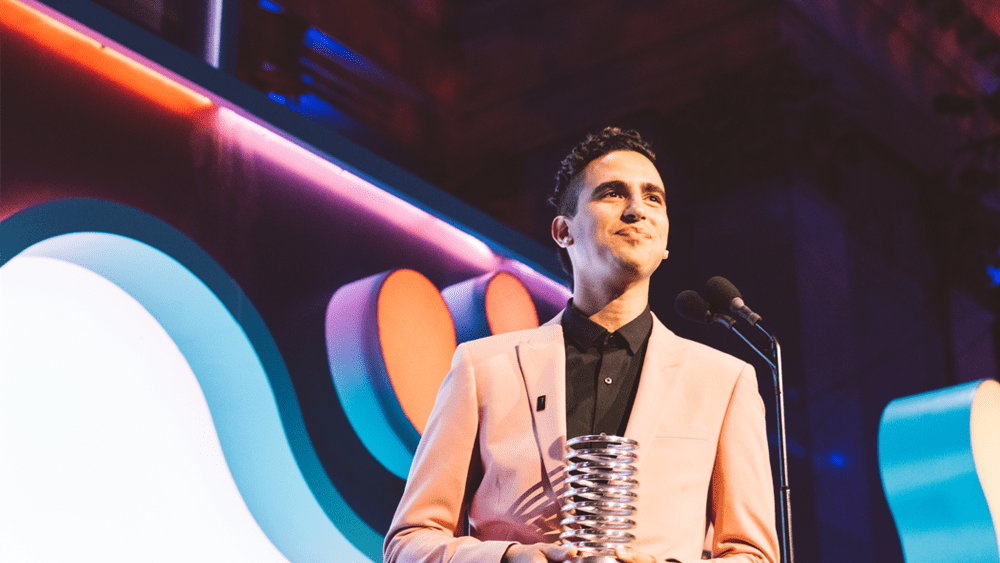The early days of the Internet may strike one as blinkered compared to today’s vastly interconnected world. However, one of those turnkey moments in its development occurred on June 15, 1987, when Steve Wilhite created the GIF, or, Graphics Interchange Format. An employee of CompuServe, Wilhite invented the GIF as a file format to allow for the easy transfer of images (especially in color). The Webbys honored Wilhite in 2013 with a Lifetime Achievement, where he memorably put an end to “the most absurd religious war in geek history”—the decades-old debate over the pronunciation of ‘GIF.’
Watch
How to pronounce "GIF"
Many of the earliest GIFs have been lost to time unfortunately, but nostalgia is a damn potent emotion and several of the most popular GIFs of the 1990s and early aughts are still around.
Remember Dancing Banana, the Oogachaka Baby & the glowing fire? They’re still here, enshrined in the Internet hall-of-fame, as it were, in all their quirky, pixelated form. These GIFs, the ones which last, are mementos of a time and place of the World Wide Web’s development. The genius of which was in the GIFs’ compressed size, endless customizations and closed-loop animation. Which mattered immensely in the days of dial-up where a video could buffer for what seemed like eons, whereas, a GIF could rock on, endlessly, upon upload.



Though originally intended as a way to transfer images across the low-bandwidth of the Web 1.0, the GIF would likewise open up a new school of net.art. GIFs—essentially compressed animations via timed delays—allowed artists like Olia Lialina to use GIFs to illustrate Web-based stories and art experiences. Whereas, a pioneer in GIF production, Chuck Poytner, made hundreds of deceptively simple, yet entrancing GIFs (such as the Dance Fever cast below) free and available to the public.

Then came the explosion in popularity of Yahoo!’s GeoCities, an early personal webpage platform, which would usher in the era of pimp-my-blog sites—a haven for GIFs. Check out this site for a glimpse into how GeoCities would look on today’s Internet.
As a good MySpace page was not without some twirling icon, sparkling graphic or rotating image (see: above), the GIF was populating the Internet in a viral way that, even as those sites fell from vogue, Tumblr would provide a new home for GIF-dom. Which is exactly what Webby Winner Alexander Light did, publishing the illustrative and aptly-named “Retrospectgif” Tumblr of the GIF in its many manifestations.
Today’s Internet, of ad libbed, roving interactions has found its essential element. The GIF is practically hard-coded into its humor alongside viral videos, emojis and impact-font memes. It is everywhere. It is our interpersonal comedy: a substitute for words, moods, for the gamut of emotions, really. Nostalgia for the 80s and 90s may be at a nadir for Millennials, the first generation to come of age with the Internet, whose pervasive use of GIFs cannot be overstated.
Though the Internet does not lack for dancing icons or cats being cats, today’s GIFs, allowing for better technology and data speeds, are more intricate and span the cultural milieu, high to low. That any smartphone wielder can create GIFs of virtually anything, speaks to how GIFs connect people, sometimes millions of people, through sarcasm, irony, exasperation over the latest celebrity drama, schadenfreude and self-deprecation. The psyche of the Millennial, arguably then, is GIF-able. Where the storytelling occurs through GIFs in aggregate and, generally, without taking oneself too seriously.

With such potential, the GIF is a unique and valuable form of Internet content. While advertisers use GIFs in branded content and photographers use it to produce cinemagraphs and stereograms, the experience may be different, but the rate of exposure is still immediate. Yet, all that echoes Wilhite’s original intention: to experience the content at once rather than click through a video or link.
Fortunately for us, life is but a GIF.


















